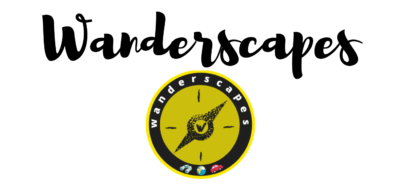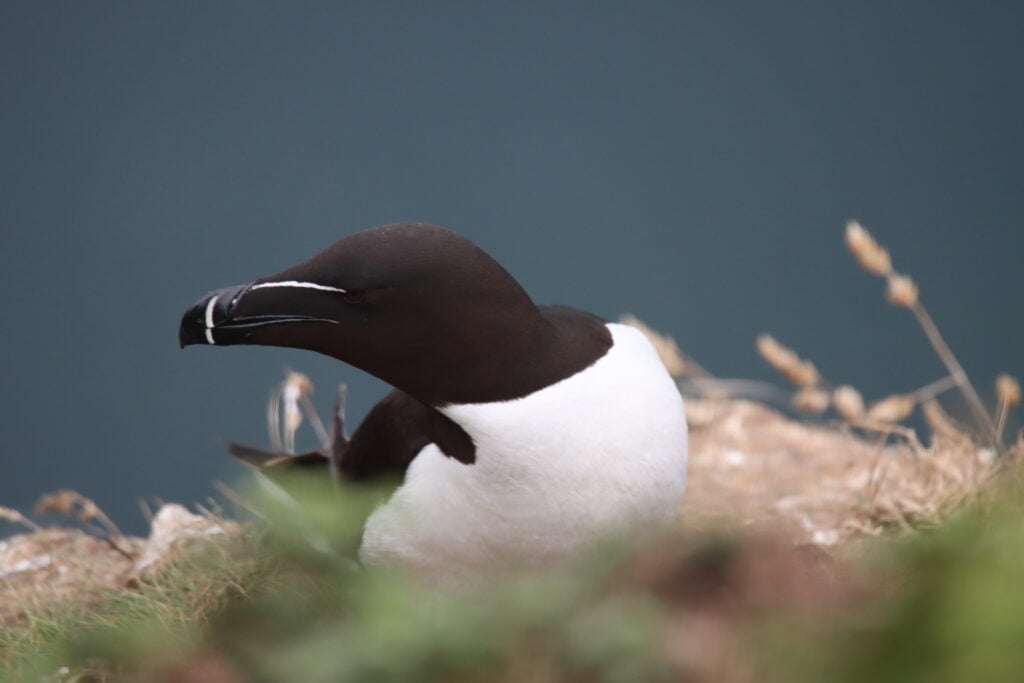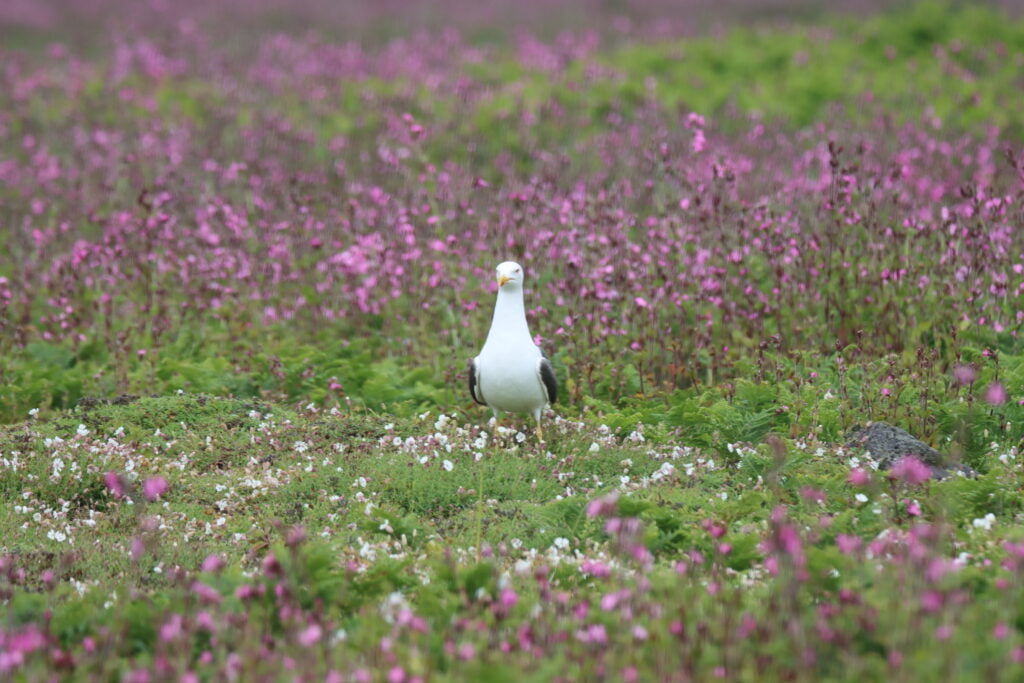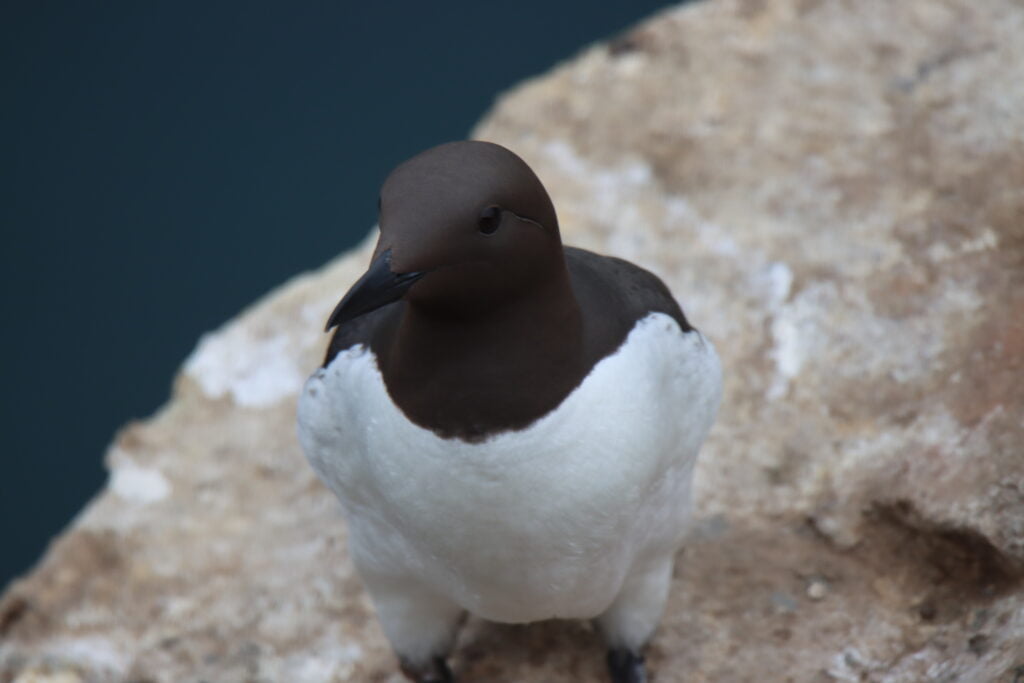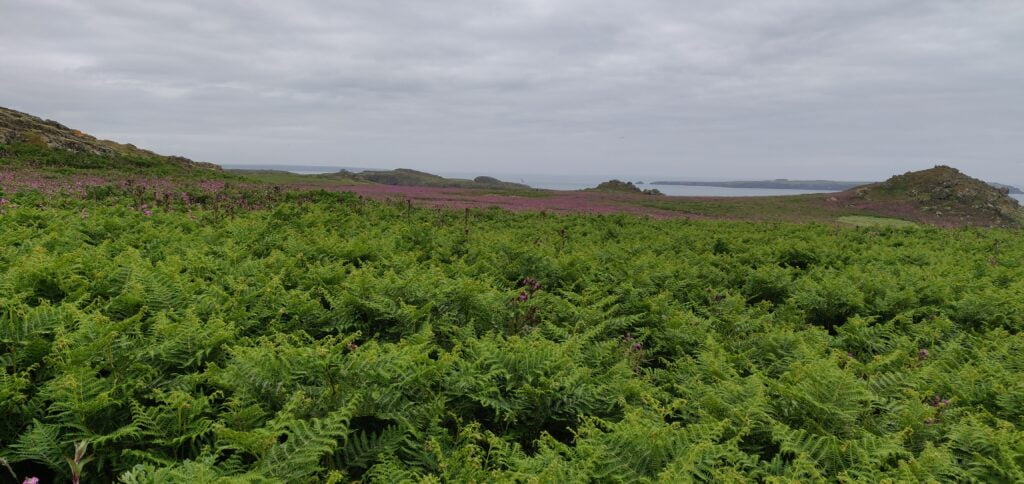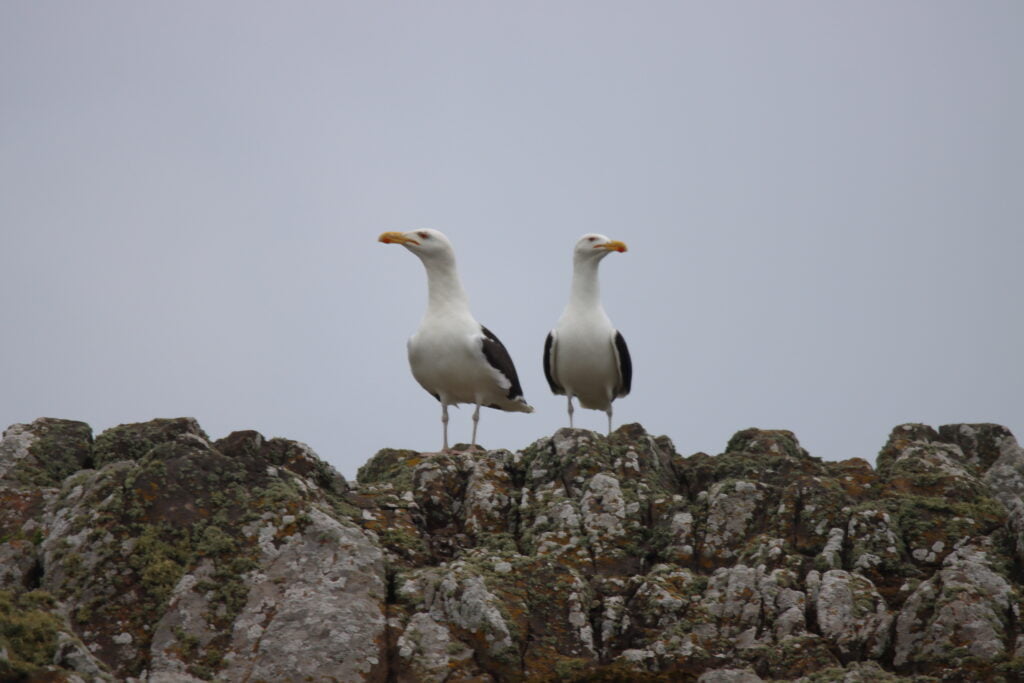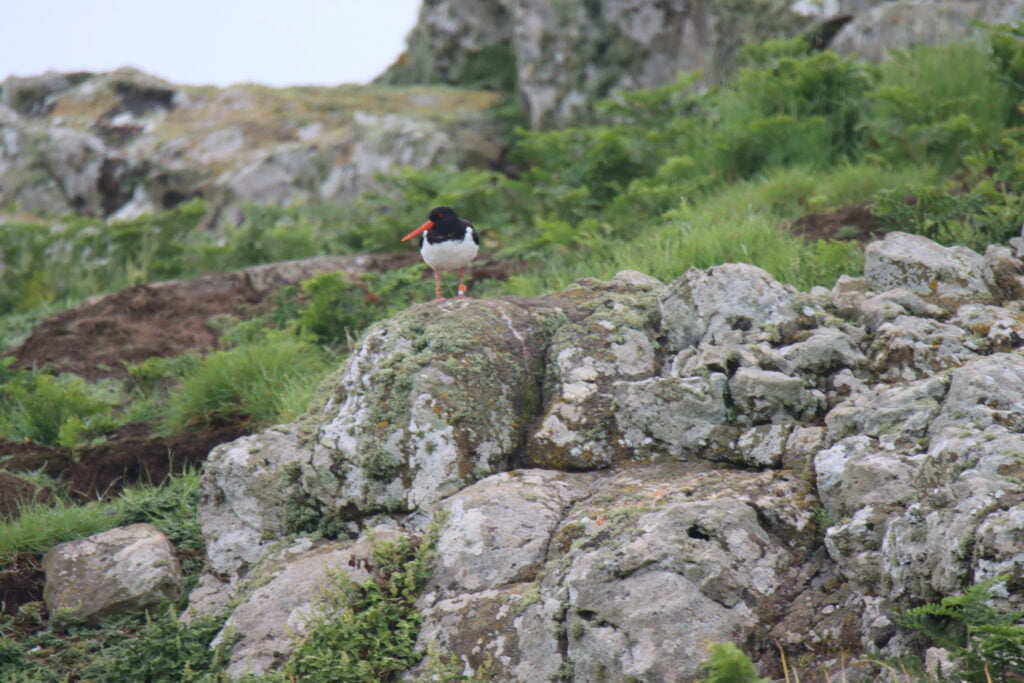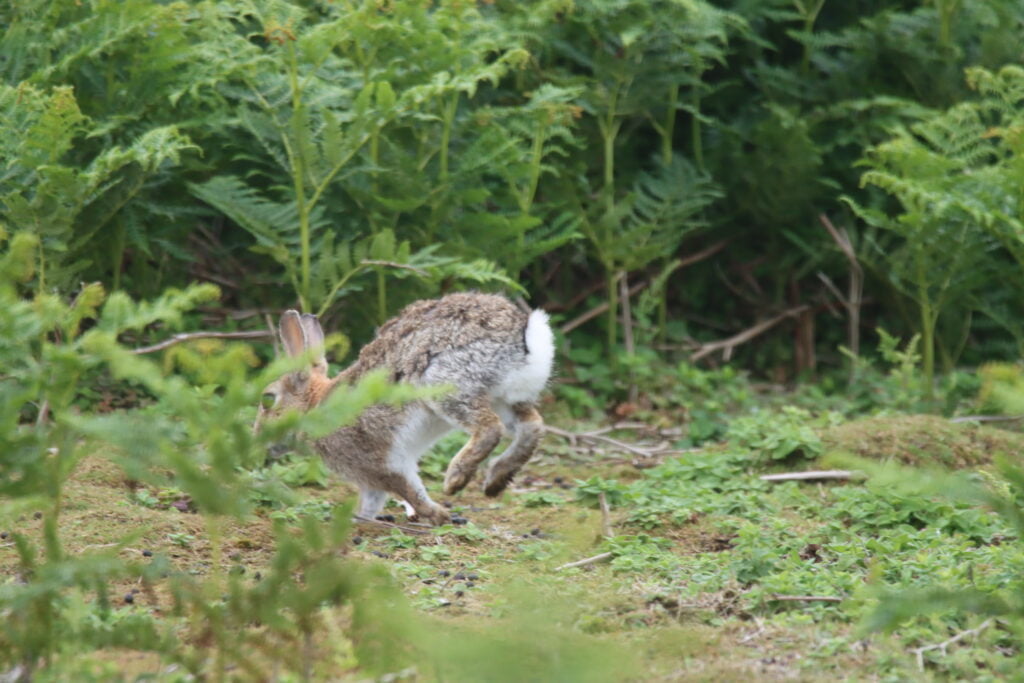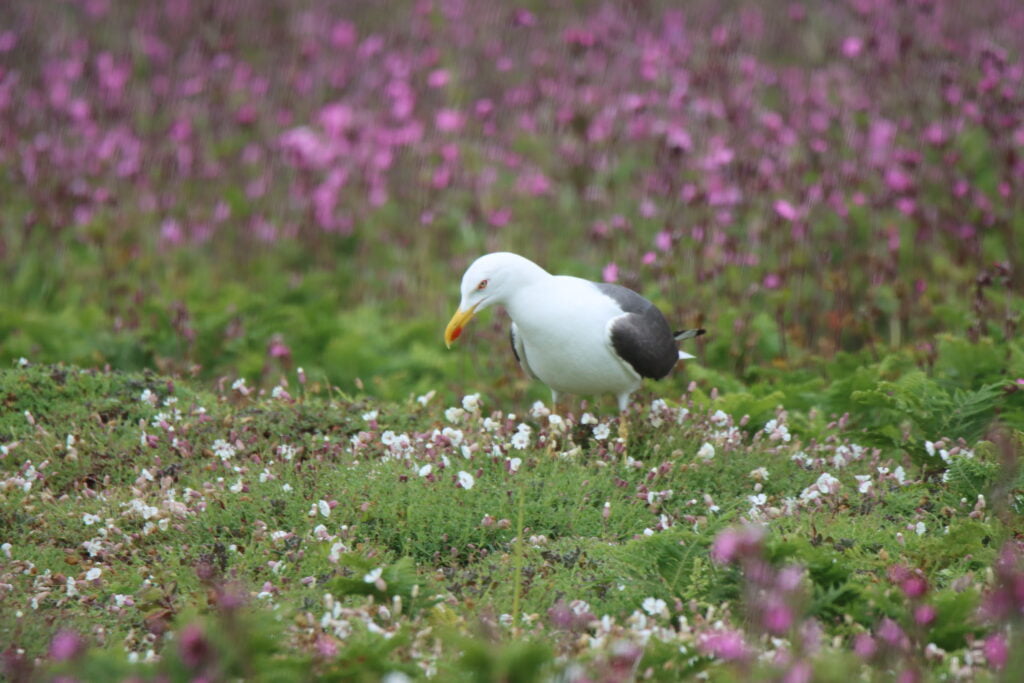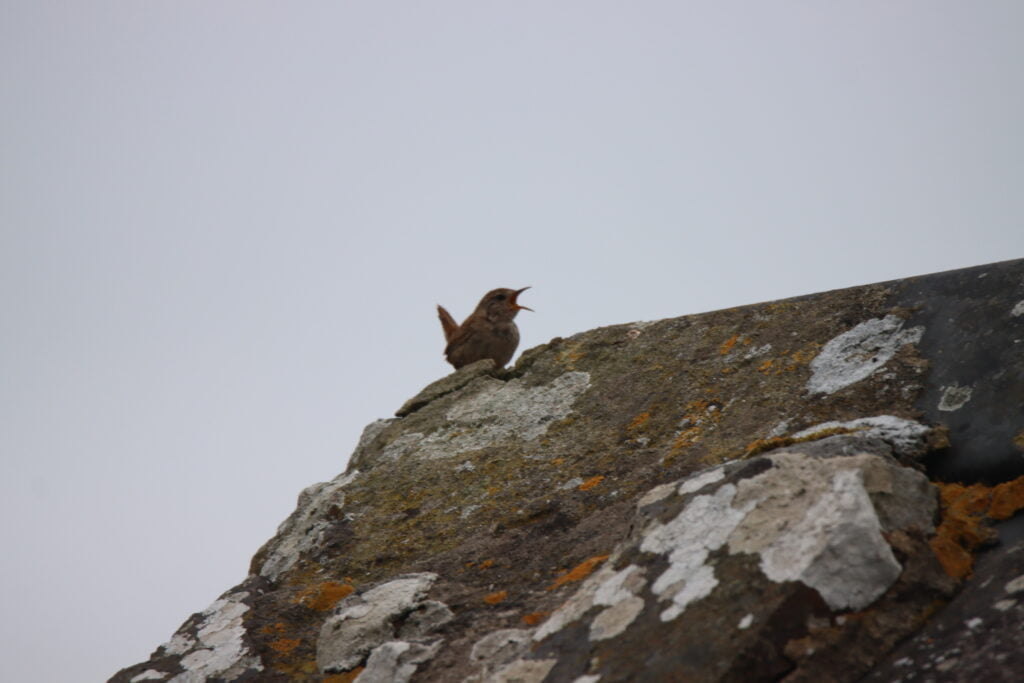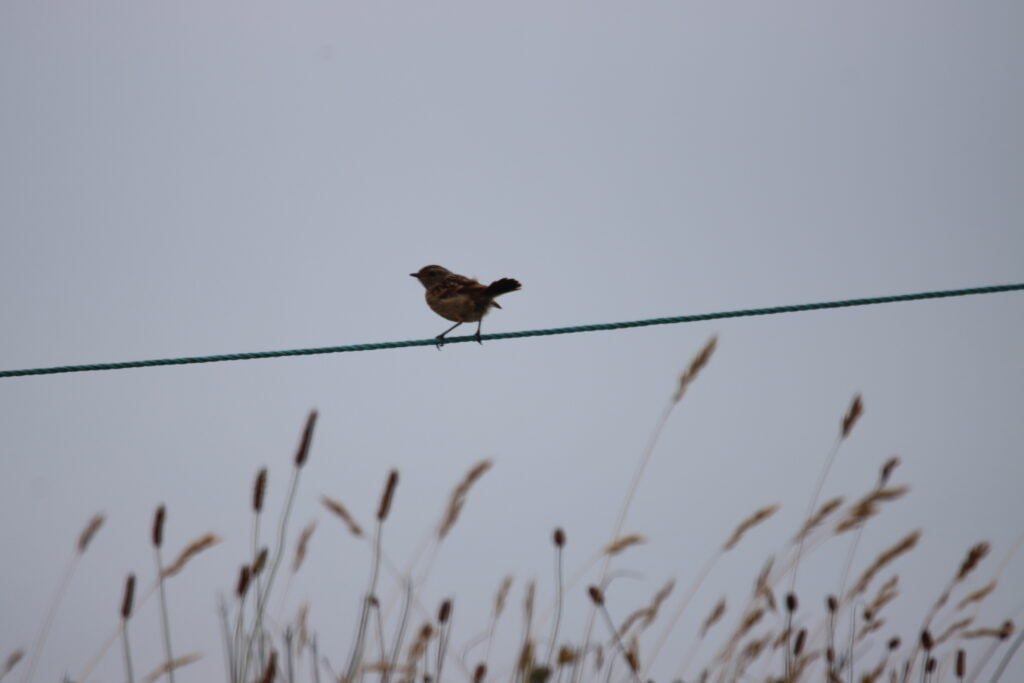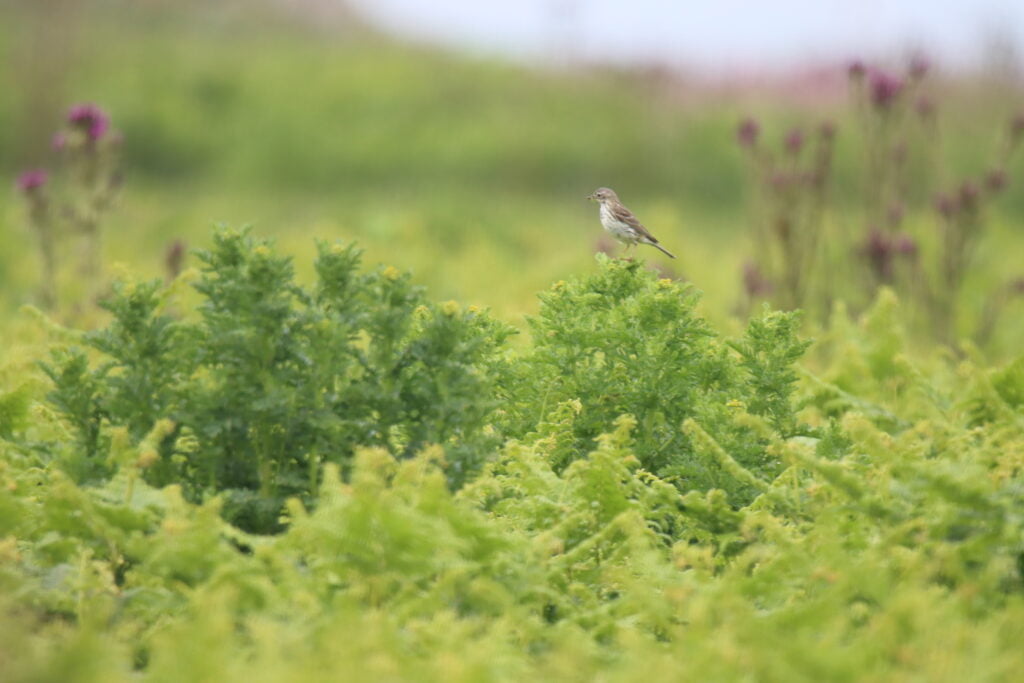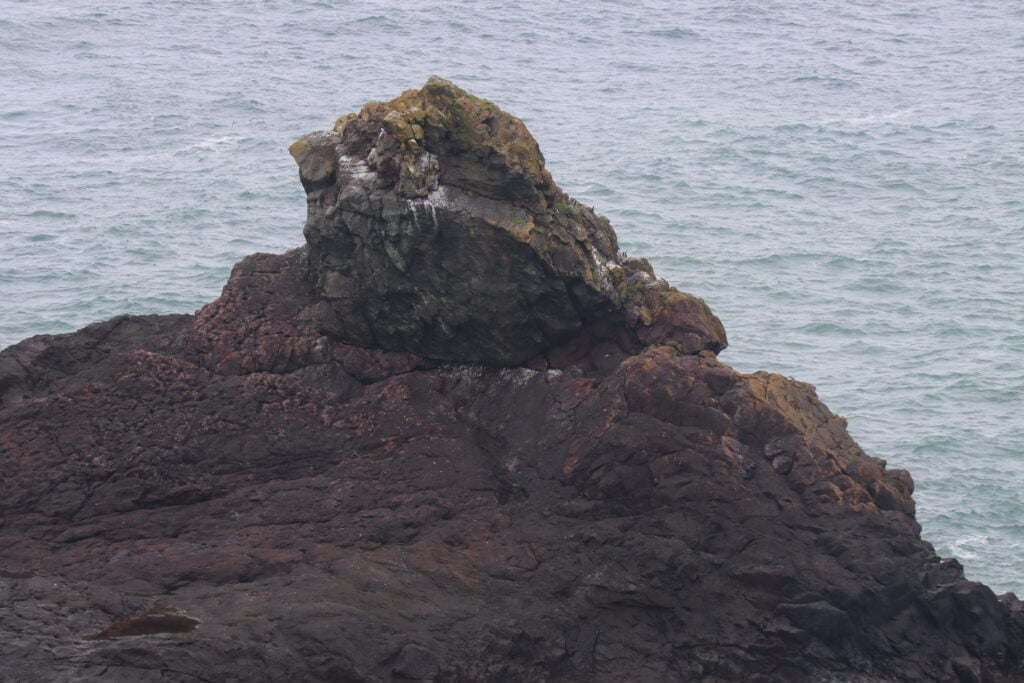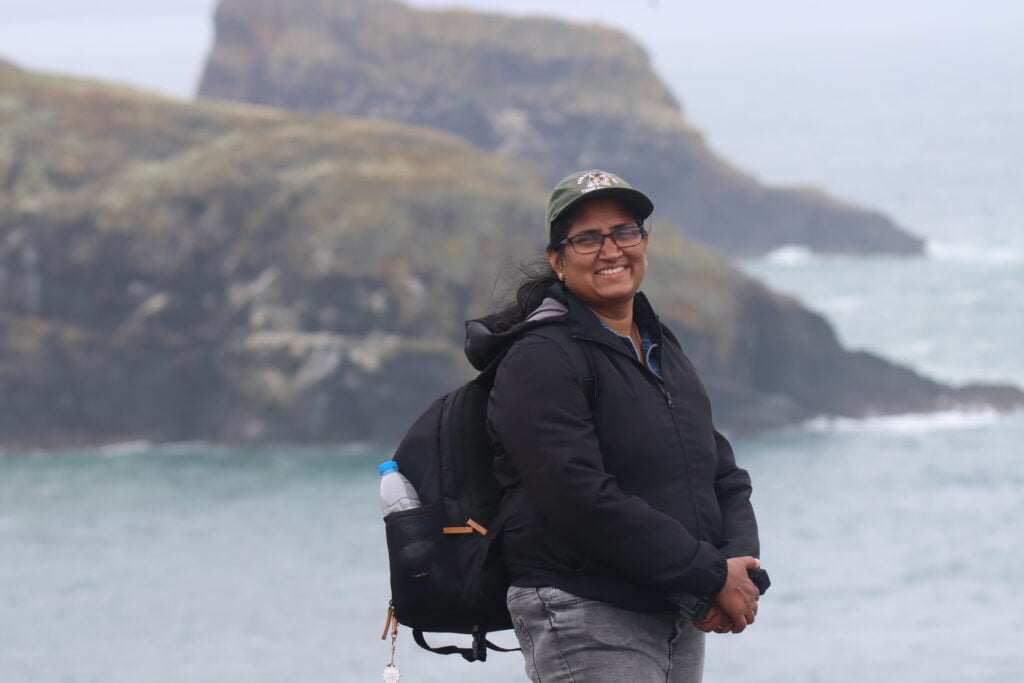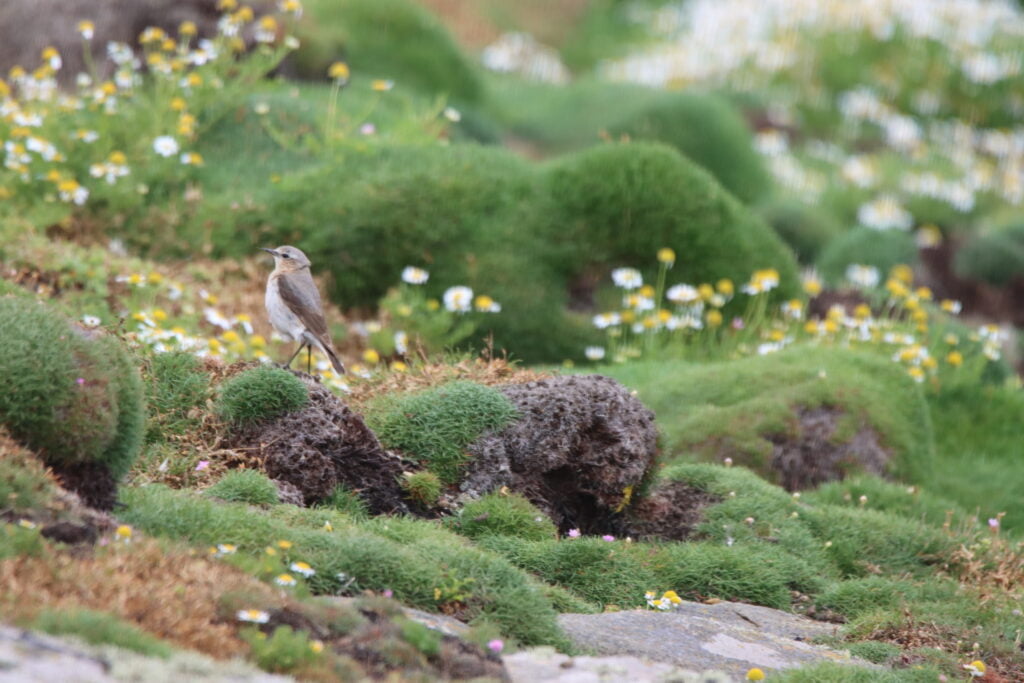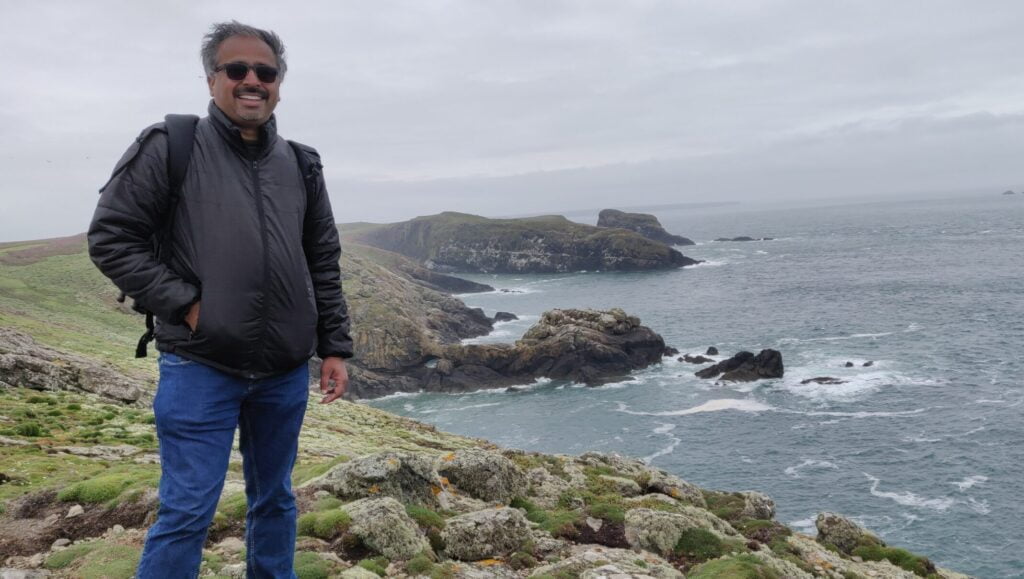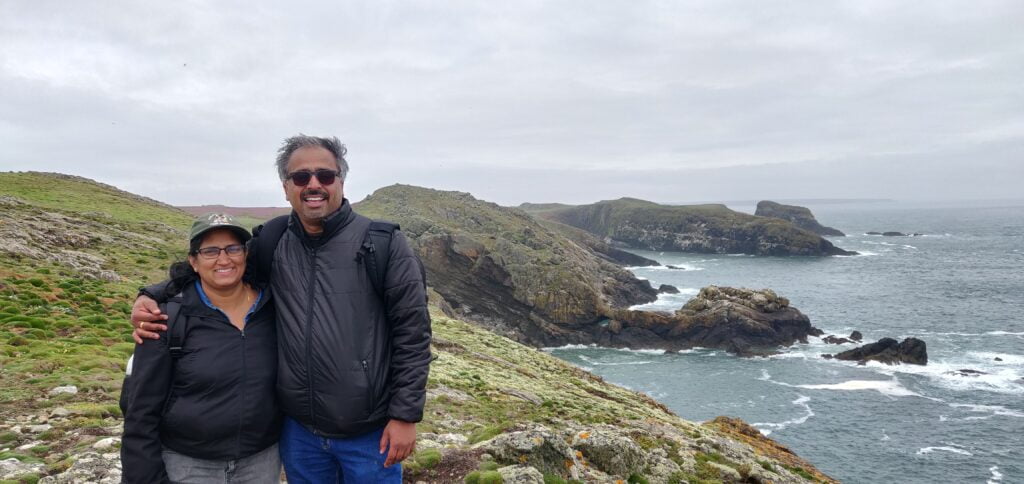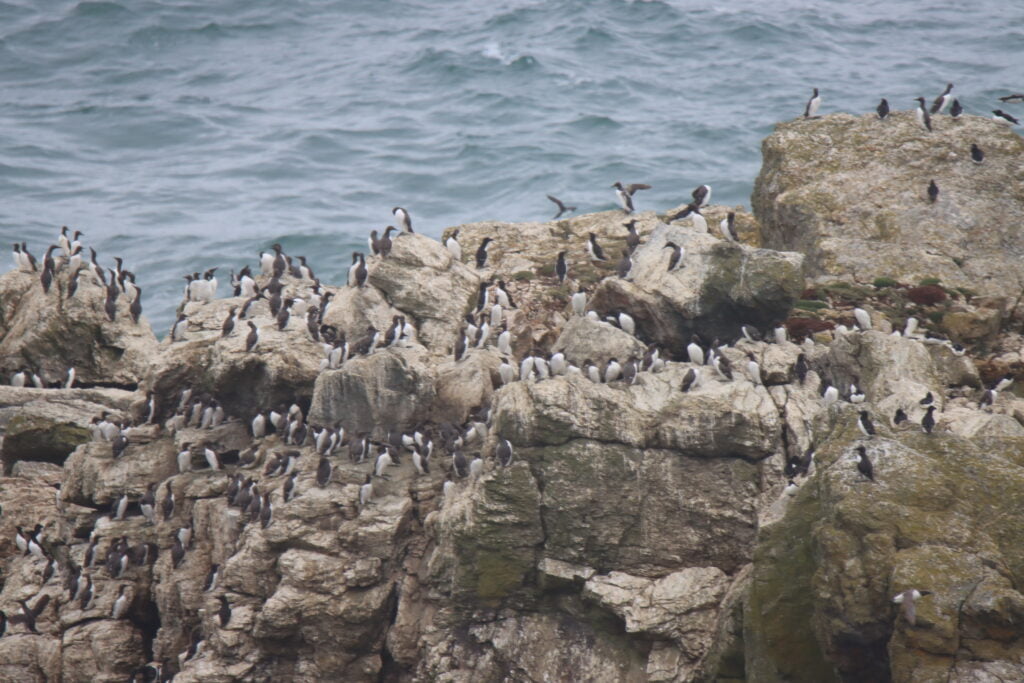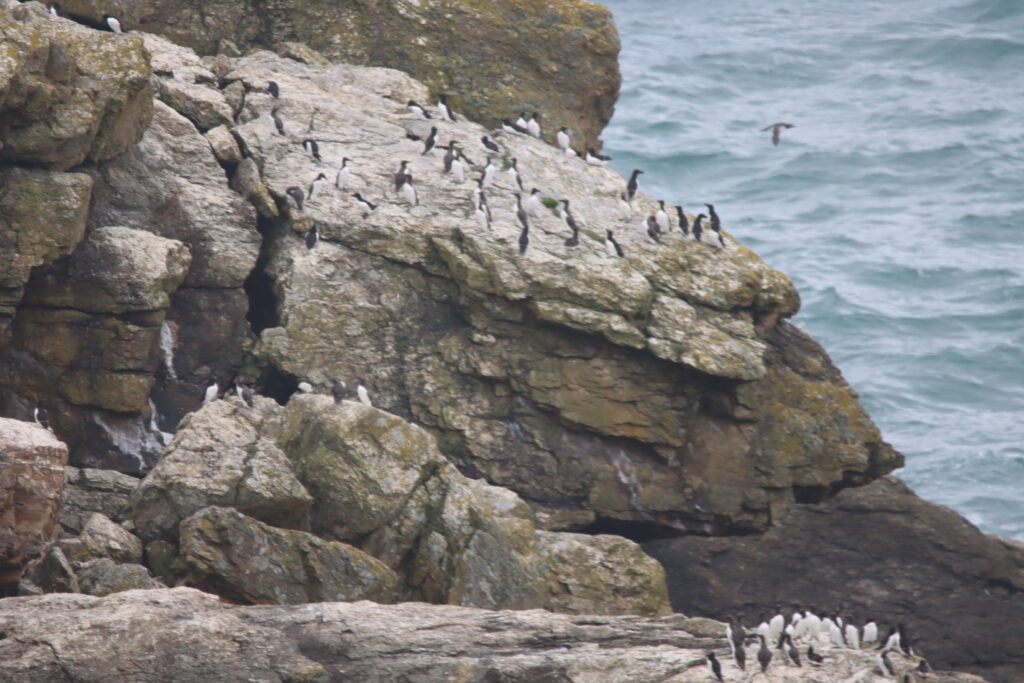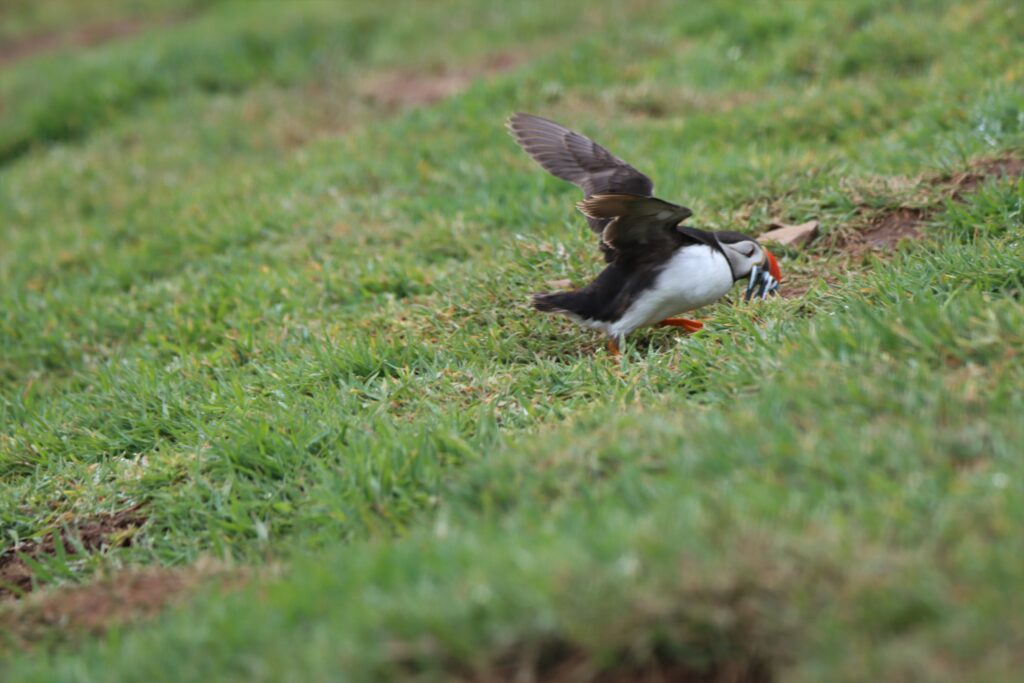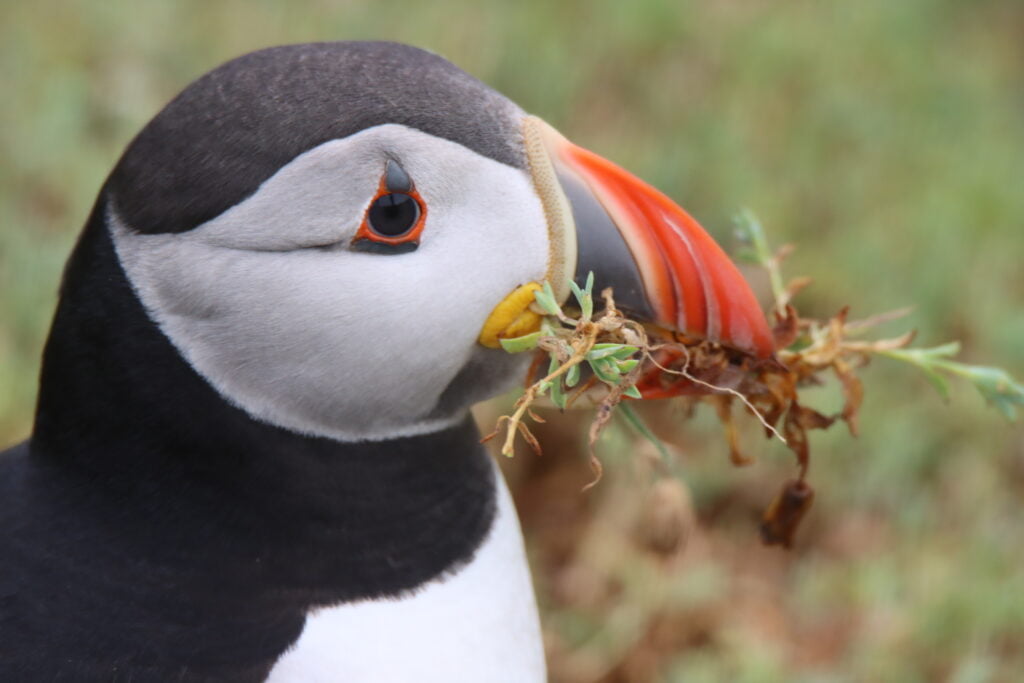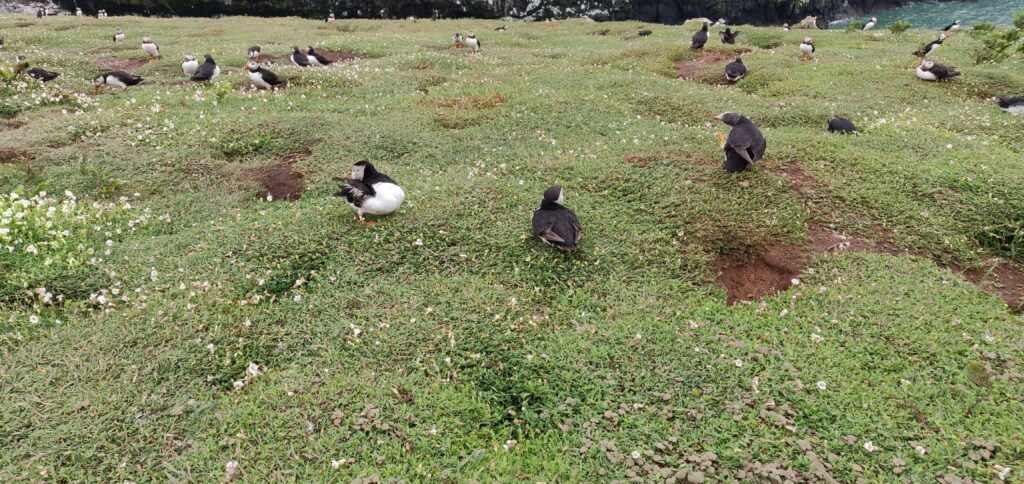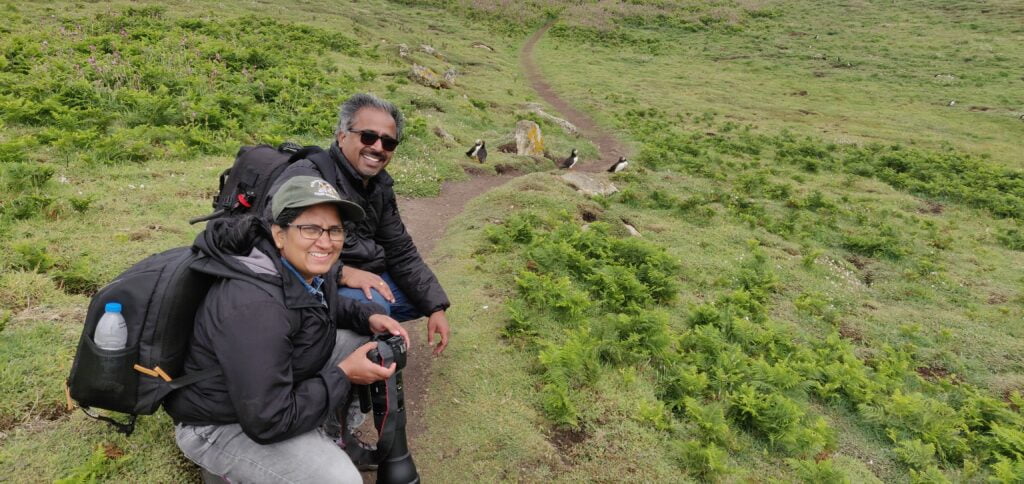In the last blog, we talked about our dream of visiting Skomer island and how we finally managed to reach there after what seemed like an impossible dream. If you haven’t read the first part, you can read it here.
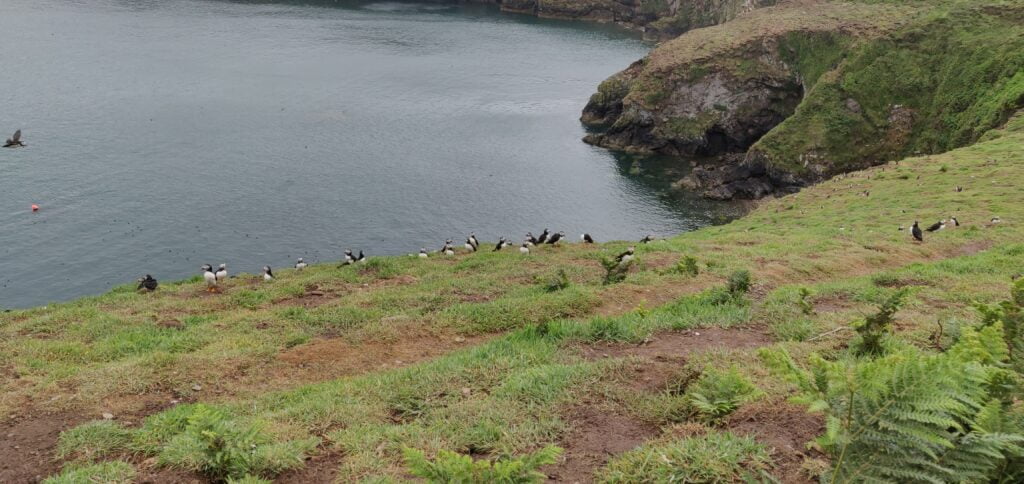
Even as we approached the island we could get an idea of what lied ahead – a wonderful day we would always cherish. After landing, we climbed a flight of stairs (it was quite steep and we had to take a break or two in between – photo breaks :P) and reached a clearing where the conservator in charge told us about the island.
We were told that Skomer is home to 35000 breeding puffins and 350000 Manx Shearwaters. However, the island also sustains various wildlife like rabbits, birds such as buzzards, chough, short-eared owl, peregrine falcon, razorbills, guillemots, oystercatchers, and different types of gulls. Although most people visit Skomer to see the puffins, it is an important breeding ground for Manx Shearwaters. Half of the world’s Manx Shearwaters come to Skomer to breed. It is the largest colony of the bird in the world. The island has an important role in the conservation of the species.
Skomer is not huge – the area is 2.9 sq km. It is possible to cover the entire area on foot within 3-4 hours. Several pathways lead to different parts of the island. We were told that certain species of birds and animals like dolphins, porpoises, seals, etc preferred certain parts. So, in order to see different species, we might have to go to different parts. Regardless, the island is thriving with nature and we were free to explore it at our leisure. There were only two conditions – under no circumstances should we wander off from the path and we should be back at the landing point 15 min before our time of departure.
Soon, we set off on our exploration or rather tried to. How can one move on when you see puffins all around you? Everywhere you look, there is nothing but puffins. Our cameras were put to work non-stop. The more shots we got, the greedier we got! We had to force ourselves to move away and continue exploring the island. So, with some effort, we walked towards the centre of the island.
Skomer Island – Remnants of Human Inhabitation
We came across the Harold Stone, which is said to be a man-made structure from the Bronze Age or so. It means Skomer was inhabited long ago. We walked a little ahead and reached a rocky area – the view from there was magnificent. All around us we could see meadows full of red campions and other wildflowers. Gulls were flying around, kicking up a ruckus as they normally do.
Wildlife in Skomer Island
Onwards we went, taking in the beauty of it all. We saw rabbits, oystercatchers, countless gulls, a couple of wrens, some pipits and a rock chat among others. We reached the centre of the island and decided to eat our packed lunch there. The picnic tables set out at the courtyard of the visitor centre (closed due to covid) was the ideal place to enjoy our lunch. There were some bio toilets in the dormitory building, in case someone needed to use it.
Once we were well fed and a bit rested, we decided to continue exploring the island. At first we thought of going to the side where we had chances of seeing some raptors. But on second thoughts, we decided against it and headed towards Skomer Head. We had a lovely walk to reach Skomer head – the entire path was lined by red campions on either side and there were several birds chirping around.
Along the pathway, we saw several dead birds too – couldn’t tell which ones or why they all died. Soon we reached Skomer Head and was greeted by the sights of a Wheatear and few rabbits. After clicking their pics we headed to the tip of the land and was blown away by the sheer beauty of nature.
The scene ahead of us was amazing – blue sea gushing onto rocks, birds flying all around, wind blowing and the heart singing songs of joy! It was one of the most happiest moments of our lives in the recent times. We were happy just being there – at that moment, nothing else mattered. The fact that we could see it all with our own eyes and soak it up in our hearts was enough. Oh… the joys of nature!
The Wick – Puffin Highway at Skomer Island
After spending sometime there basking in that beautiful setting and sealing it in our minds, we headed to the Wick – or the puffin highway. We could see people lined up along the pathway from afar. With hearts throbbing with excitement, we headed towards the most awaited moments of the trip – yes, we are about feast our eyes upon countless puffins.
As we entered the wick, it was like entering into a surreal world – or bird paradise. Everywhere we looked all we could see was puffins. There were flying around, walking across the path – often between our legs (or close to us). We were so excited and lost in it all that we didn’t know what to look and feel apart from the extreme happiness and excitement in all our being…
Entertainment all around
We sat down along the path and watched them pass by – some of the puffins got so close to us that we could touch them, if we wanted to – but we know we shouldn’t do it. Anyone would want to cuddle them – they are so cute. We just wanted to enjoy watching them and that’s what we did for the next hour or so (it felt like a few minutes).
It was action packed – some were busy preening, few others were showing their love by clanking their beaks together, quite a few of them returned from the sea with fish in their beaks. We were so lost in all that we forgot we had to click pictures. Despite wanting to click the iconic picture of a puffin with sand eels nicely tucked in its beak, we couldn’t get a good one. They were too fast – the gulls were on the prowl and if the puffins hesitated, they would steal the fish from their mouth.
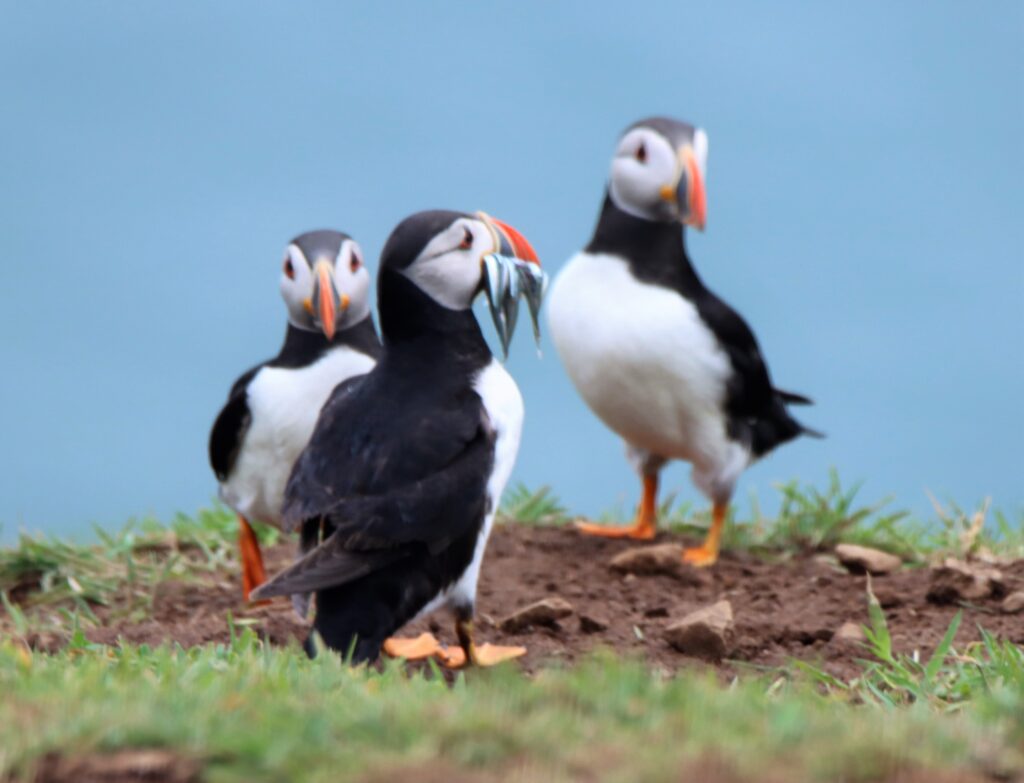
Heading Back from Skomer Island
Soon it was time to go back. We started walking towards the landing point rather reluctantly. We wished we could’ve stayed a bit longer. But then, we really had no reasons to complain. We had come to Skomer to see the puffins and that’s exactly what we did – and even though we couldn’t have enough of them, no matter how many hours we stood there and watched them, we had no right to complain. Everything worked out well for us this time. Even the rain stayed away!
So, with hearts overflowing with happiness, we reached the landing point just in time to board our boat back. Goodbyes are always painful and we didn’t want to bid bye to Skomer. Instead, we made a promise to be back again as soon as we can – with that hope, we boarded the boat and headed to the mainland. We know until we are back here there are quite a lot adventures waiting for us.
Some Interesting Puffin Facts
- Nicknamed sea parrots & clowns of the sea, Atlantic Puffins have black and white feathers and a large parrot-like beak. They are small seabirds measuring around 32cm in length.
- Puffins spend most of their lives out at sea, resting on the waves when not swimming. Their range spans the eastern coast of Canada and the United States to the western coast of Europe.
- A puffin’s beak (or bill) changes colour during the year. In spring, it turns into an outrageous orange and as winter sets in, they shed the colorful outer bill, leaving a noticeably smaller and duller-colored beak!
- Did you know? Puffins’ genus name, Fratercula, comes from the Latin for “little brother.” The name refers to the sea bird’s black and white plumage, which was said to resemble the robes that monks once wore.
- Puffins are carnivores and live on small fish such as herring, hake, & sand eels.
- Puffins are fabulous flyers, flapping their wings up to 400 times a minute and speeding through the air as fast as 55 mph. Compared with other auks that stay just a few feet above the sea, puffins usually maintain a cruising altitude of around 30 feet.
- Puffins are great swimmers, too. Using their webbed feet as a rudder, puffins can dive down 60m under water in search of their favourite fish.
- In spring and summer, thousands of puffins gather in colonies on the coasts and islands of the North Atlantic Ocean to breed. They usually pair up with the same partner as previous years – some may have been together for 20 years!
- Puffins lay just one egg per year—and usually with the same mate. Like some penguins, both parents take turns incubating the egg and caring for the chick.
- When starting a family, Puffins dig out a burrow using their sharp claws and beak, usually in a grassy bank or rocky crevice. They build a nest lined with feathers and grass at the back of their burrow, where the female lays her egg. Both parents take turns to incubate the egg for the next 36-45 days before the baby “puffling” hatches!
- Puffins may chatter up a storm at their breeding colonies, but they remain perfectly silent while at sea.
- In the wild, Puffins live for around 20 years. Their main predators are hungry gulls, which can snatch puffins mid-flight or swoop down and scoop their tasty treat from the ground – so they need to keep alert!
- Sixty percent of the world’s puffins breed in Iceland!
- There are currently eight isles around the world named Puffin Island—so named because they all are or once were home to large colonies of puffins.
- Although puffins are not classed as an endangered species, populations are in decline in some places. The major threats are overfishing, which lead to a shortage of food for puffins, and pollution – particularly oil spills. Not only does the oil make these beautiful birds sick, but it also destroys their waterproof feathers, essential for their survival.
Where to Watch Puffins in UK and Ireland?
Below are some of the UK and Ireland’s puffin hot spots – venture over between March and July to witness these incredible birds!
Scotland
– St Kilda
– Craigleith Island
– Isle of May National Nature Reserve
– Orkney Islands
– John O’Groats (surrounding coastline)
– Cape Wrath
– Fair Isle
– Shetland Islands
– Staffa Island
– Inner Hebrides
Wales
– Skomer Island, Pembrokeshire
– Skokholm Island
– South Stack, Anglesey
England
– The Farne Islands, Northumberland
– Coquet Island, Northumberland
– Bempton Cliffs, North Yorkshire
– South Stack, Anglesey
Channel Islands
– Burhou, Channel Islands
– Herm (east/south coast)
Northern Ireland
– Rathlin Island, Northern Ireland
Ireland
– Great Saltee
– Cliffs of Moher, County Clare
– Horn Head, County Donegal
– Puffin Island, County Kerry
Watch the video of our experience here
If, like us, you love watching Puffins, here is an exclusive puffin video from our trip.
